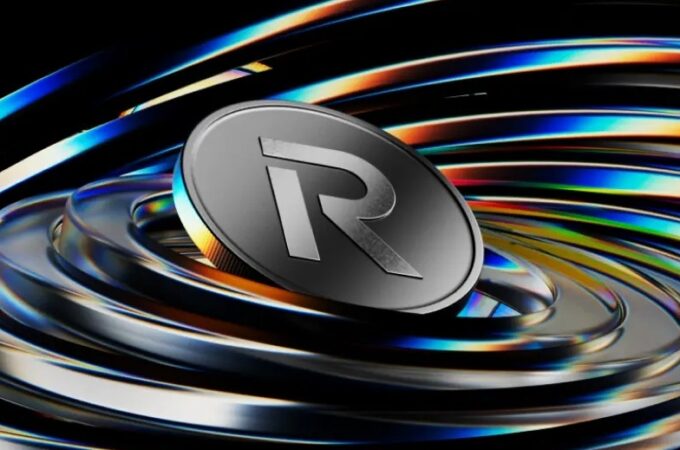Scrip is a luxurious sci-fi wallet for a cashless future
By Adi Robertson for The Verge
If you could really feel your digital money — the way you can feel the metal of a quarter or the paper of a $20 bill — would you spend it more wisely? This is the question behind Scrip, a product concept from studio NewDealDesign. As companies like Apple make financial transactions as close to invisible as possible, NDD is imagining a future where every purchase is a literally weighty decision. And to realize this dream, it’s built something sleek, science fictional, and more than a little strange.
Scrip is a handsome copper lozenge that’s smooth on the bottom and stippled on top, with space for a tiny numerical screen at one end. In reality, it exists as a trio of solid, non-electronic mockups. But in NDD’s design, the tiny bumps on top would act like a braille display, rising and receding to create numbers. In order to buy something, you’d point the device at an NFC payment terminal, then swipe your thumb across its surface, as if peeling bills off a wad of cash. For a $26 charge (or one that rounds up to it), you’d swipe once across a 20, once across a 5, and once across a 1. The cost would be automatically deducted from a refillable online wallet, its remaining balance viewable with a long press. Friends could pass each other money by tapping Scrips, and people could set the disc to lock up if it got too far from their phone.
As director of experience design Jaeha Yoo describes it, Scrip isn’t much more than a high-tech version of a public transit fare card. But its value lies in feeling valuable. Instead of swiping a card or hitting a button, Scrip users would be making payments using a physical object that looks like a piece of jewelry, while miming handing over each bill.
“The main thing about user interface [design], primarily, is thinking about the efficiency of the action from a system perspective, not necessarily from a visceral emotional human perspective. It’s measured like, how fast can you do something?” says company founder Gadi Amit, known for his work on products like the FitBit. Even when designers do aim at triggering visceral emotions, they’re usually supposed to be positive ones. Scrip, while it might be gorgeous, is meant to make you feel a little bad.
“Spending cash is actually painful to people,” says Yoo cheerfully, when I sit down with him and Amit to take a look at Scrip. “It literally triggers pain receptors — the act of moving these physical things from one side to the other triggers this loss aversion.” He alludes to a plethora of studies that suggest debit and credit cards promote irresponsible spending, while using cash prompts pro-social behavior. (The pain factoid is from a 2007 Montreal Neurological Institute study that asked subjects to make spending decisions in an fMRI machine.) Scrip is supposed to reproduce these effects as closely as possible without being actual cash.
/cdn0.vox-cdn.com/uploads/chorus_asset/file/7143483/02_Scrip.jpg)
NDD’s most convincing case for Scrip, beyond the fact that it looks genuinely gorgeous, is that it could effectively teach children about budgeting. “I have a two-and-a-half year old kid, and I was thinking, in this age where I’m buying things with my watch now, he’s going to grow up with so little sense of why it’s okay to buy this $5 thing but not a $25 thing,” says Yoo. “It’s the same tap.” Scrip could replace the refillable debit cards that some parents buy, adding features like making users swipe more slowly the more they spend.
Beyond that, though, there are obvious reasons why this is a thought experiment and not a consumer product — just as NewDealDesign’s earlier Project Underskin wasn’t a literal roadmap for hand implants. Over the past few years, hardware startups that aim to replace your wallet — like Coin, Stratos, and Plastc — have struggled to deliver on their promises. Outside its putative behavioral effects, cash has concrete perks. It doesn’t log your transactions, rack up payment processing charges for merchants, or face the risk of disappearing thanks to a glitch or hack. Amit says Scrip wouldn’t create the same kind of “paper trail” as a credit card, but it’s hard to see how it would meet any of the above criteria while retaining the benefits of digital money. And cash isn’t just psychologically important because it’s an object, but because it’s imbued with hundreds of years of history and symbolism. What would it take for a gadget to replicate that?
Above all, Scrip would be a money-saving tool that signals you have money to burn. As a concept, it doesn’t have a price, but it’s clearly supposed to feel precious. Rounding off transactions only makes sense if you aren’t carefully counting pennies in your bank account. Scrip would be a fantastic set piece in a ‘70s sci-fi film, and the idea raises interesting questions about the effects of tactile sensation, the psychology of user interfaces, and where exactly we situate the value of money. But in real life, it would feel like the monetary equivalent of upper-class minimalism: virtuous thrift as an ostentatious luxury.





